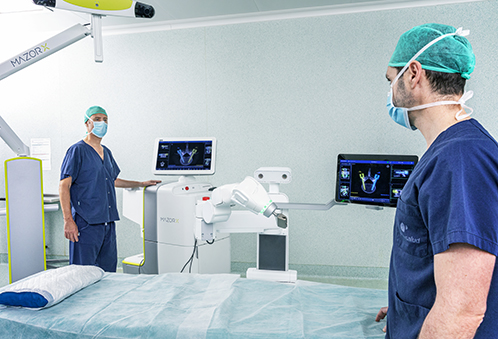The Mazor X Stealth Edition, the latest model of the Mazor, is a robotic surgery system consisting of a workstation and a robotic arm.
Acabar con el dolor es posible y nuestro equipo quiere ayudarle a conseguirlo. Dé el primer paso contactando con nosotros.
Madrid: +34 919 148 441
Barcelona: +34 936 090 777
Llevamos la excelencia neuroquirúrgica a Sevilla, ofreciendo servicios especializados en neurocirugía de columna y cráneo.
¡Llama al +34 955 277 751 o +34 633 143 686 para más información!
The Mazor X Stealth Edition, the latest model of the Mazor, is a robotic surgery system consisting of a workstation and a robotic arm.

Unlike its predecessors, includes an integrated optical camera that allows the robot to acquire images in real time and perform a volumetric evaluation of the surgical field to auto-detect its location and avoid collisions with other system components.
SURGERY TO CORRECT SCOLIOSIS
ARTHRODESIS OF THE DORSAL SPINE (DEGENERATIVE, TRAUMATIC OR TUMOR PATHOLOGY)
ARTHRODESIS OF THE LUMBAR SPINE (DEGENERATIVE, TRAUMATIC OR TUMOR PATHOLOGY)
VERTEBRAL BIOPSY (TUMOR PATHOLOGY)
KYPHOPLASTY (VERTEBAL FRACTURES)
Robotic surgery systems have shown obvious advantages in comparison with conventional surgery of the spine:

The Mazor X robotic surgery system works as follows:
Contact us so that we can give you a personalized assessment.